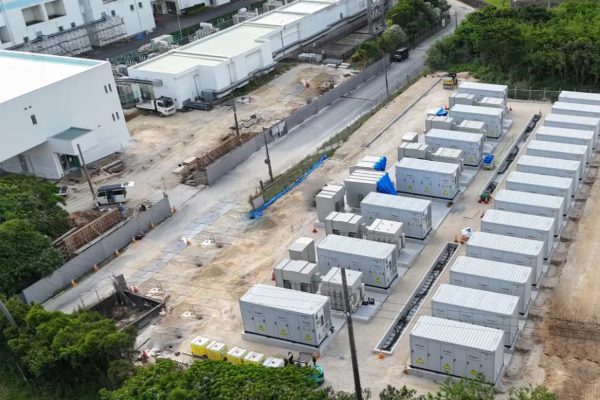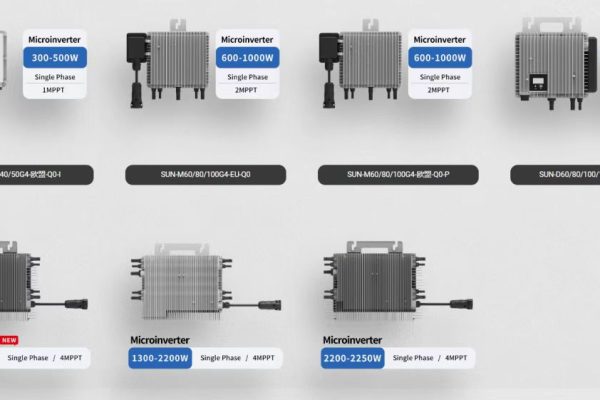With the rise of distributed energy and electricity cost optimization, more small commercial and light industrial customers are turning to battery energy storage systems (BESS) as part of their energy strategy. Whether it’s for peak shaving, self-consumption, backup power, or load shifting, correctly sizing a battery system is critical for project success and long-term ROI.
As a technical trading partner, understanding how to size battery systems helps you support EPCs, installers, and distributors with faster quoting, smarter matching, and more professional project conversations.
1. Why Sizing Matters
Battery systems are one of the most expensive components in a PV + storage project. Undersizing results in unmet energy demands and unhappy clients. Oversizing leads to wasted capital and low returns.
Proper battery sizing ensures:
- 💡 Performance: Enough capacity to meet energy goals
- ⚙ System Compatibility: Matches inverters, EMS, and voltage levels
- 💰 Cost Efficiency: Optimal ROI and faster payback
- 🔒 Safety: Prevents over-discharge or thermal issues
- 📈 Scalability: Meets future load growth if needed
2. Identify the Core Application
Before calculating capacity, identify the main purpose of the battery system. This determines the design priority:
| Application | Design Focus | Battery Role |
|---|---|---|
| Peak Shaving | Power (kW) & short duration | Reduce grid demand charges |
| Load Shifting | Energy (kWh) & full cycles | Store cheap, use during peak |
| Backup Power | Duration & reliability | Supply during outages |
| PV Self-Use | Daily cycling & energy flow | Maximize solar use |
| Frequency Regulation | Fast response, shallow cycles | Ancillary services (less common) |
👉 For small commercial projects (e.g., factories, offices, retail chains), peak shaving, PV self-consumption, and backup power are the top 3 drivers.
3. Collect Key Data Inputs
You’ll need the following data from the client or project documents:
🔌 Load Profile Data
- Average daily load (kWh)
- Peak load (kW)
- Load timing (hourly curve)
- Backup load subset, if relevant
💡 Related:
👉 Typical Load Profiles in C&I Applications
☀ PV Production Data (if applicable)
- PV array size (kWp)
- Estimated daily generation (kWh/day)
⚡ Grid Tariff Information
- Peak hours
- Time-of-use pricing
- Demand charges
⛑️ Backup Requirements
- Critical equipment list
- Duration of outage coverage (e.g., 2 hours or 1 day)
4. Battery Sizing Formulas by Application
A. Sizing for PV Self-Consumption
Goal: Store excess solar for use during non-solar hours.
Formula:Battery Size (kWh) ≈ Daily Solar Surplus - Evening/Night Load
Example:
- PV generates 100 kWh/day
- Daytime load = 60 kWh
- Surplus = 40 kWh
- Night load = 35 kWh
→ Recommended battery size: 35–40 kWh, ideally with 1C charge/discharge rate
B. Sizing for Peak Shaving
Goal: Discharge battery during high demand spikes to reduce grid charges.
Focus: Power (kW) and short-duration energy (15–60 mins)
Formula:Required Discharge Power (kW) = Peak Reduction TargetBattery Capacity = Power × Duration
Example:
- Target: reduce 50 kW peak load for 30 minutes
→ Required battery = 50 kW × 0.5 hr = 25 kWh
→ Choose a battery with ≥1C rating (high power output)
C. Sizing for Backup Power
Goal: Supply power during outages
Formula:Battery Size (kWh) = Critical Load (kW) × Backup Duration (h)
Example:
- Backup load: 10 kW
- Required backup duration: 4 hours
→ Battery size = 40 kWh
Add 20% buffer → 48 kWh recommended
D. Hybrid Applications
Most real-world cases combine 2–3 goals (e.g., PV self-use + peak shaving + backup). In these cases, size based on the largest energy demand, and ensure battery performance (DoD, cycles, C-rate) supports all intended use cases.
5. Battery Voltage and Inverter Matching
Nominal Voltage
Battery banks must match or be compatible with inverter DC input ranges.
| Application Type | Voltage Range |
|---|---|
| Small Systems | 48V (e.g., 5kWh, 10kWh) |
| Commercial Systems | 192V–512V+ (e.g., 100kWh, 250kWh) |
C-Rate Considerations
- Backup systems → often need 0.5C or higher
- Peak shaving → ≥1C required
- Daily cycling → lower C-rates (0.3–0.5C) are fine
💡 Related:
👉 How to Match a Battery Pack with a Hybrid Inverter
6. Depth of Discharge and Usable Capacity
Battery sizing must account for DoD (Depth of Discharge):
| Battery Type | Typical DoD | Notes |
|---|---|---|
| LFP (LiFePO₄) | 90–95% | Most common for commercial ESS |
| NMC | 80–90% | Higher energy density, lower lifespan |
| Lead-acid | 50–60% | Obsolete in commercial BESS |
Example:
To supply 40 kWh usable capacity, you need:
→ 44.5 kWh rated capacity with 90% DoD
→ Or 50 kWh with 80% DoD
7. Battery Lifespan and Cycling
Small commercial applications often operate daily cycles, so choosing a long-lifespan battery is critical.
| Metric | Typical Value |
|---|---|
| Cycle Life | ≥6000 cycles for LFP |
| Calendar Life | ≥10–15 years |
| Roundtrip Efficiency | 90–95% |
Choose reputable brands or verified cell manufacturers. Ask about certifications (UL, CE, IEC62619) and safety features (BMS, thermal cut-off).
8. Real-World Sizing Examples
Retail Store with PV + ESS
- Load: 120 kWh/day
- PV: 100 kWh/day
- Night load: 40 kWh
- Goal: Maximize self-use + 2-hour backup
Sizing:
- Battery = 40 kWh (self-use) + 20 kWh (backup) = 60 kWh
- Recommend LFP, 512V, 0.5C system with EMS + cloud monitoring
Office Building with TOU Tariff
- Load: 80 kW peak, 200 kWh/day
- Goal: Shave 40 kW from 6–8 PM peak
Sizing:
- Discharge = 40 kW × 2 hrs = 80 kWh
- High-power LFP battery (≥1C), 100 kWh rated
- Match to 50 kW PCS + smart meter for automated operation
9. What to Ask Clients Before Proposing a Battery
Use these questions to build trust and get key data:
- “Do you want to cover any backup loads, and for how long?”
- “Are you billed based on peak demand or energy usage?”
- “Do you already have solar installed, or is this a new system?”
- “What is your expected daily cycling pattern?”
These insights let you provide value beyond price.
10. Internal Links for Further Reading
- 👉 What Is a PV+ESS System and Why SMEs Should Care
- 👉 Choosing PCS for Industrial Projects
- 👉 How to Select an EMS for PV+Storage Systems
- 👉 Key Parameters When Sourcing Hybrid Inverters for Export
11. Final Thoughts: Sizing = Solution, Not Just Specs
Battery sizing is not just about matching numbers—it’s about understanding the customer’s energy behavior and goals. As a technical foreign trade partner, your ability to assist in sizing and configuration positions you as a trusted advisor, not just a supplier.
By mastering battery sizing fundamentals, you can:
- Quote faster and more accurately
- Reduce risk of mismatched specs
- Deliver better-performing systems
- Build lasting customer relationships
Need support with sizing or BOM preparation for your client project? Our team can help you match hybrid inverters, battery modules, EMS, and accessories tailored for small commercial ESS deployments.









